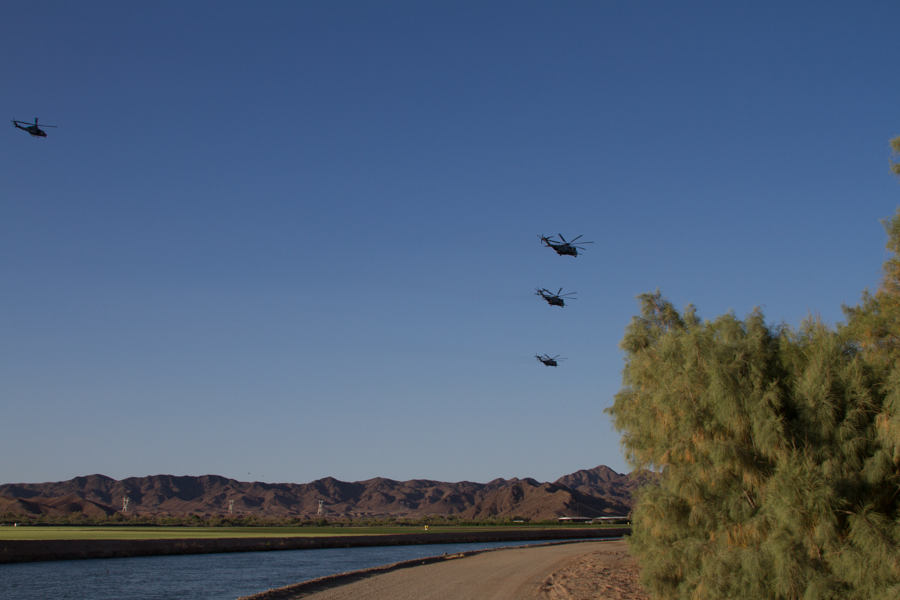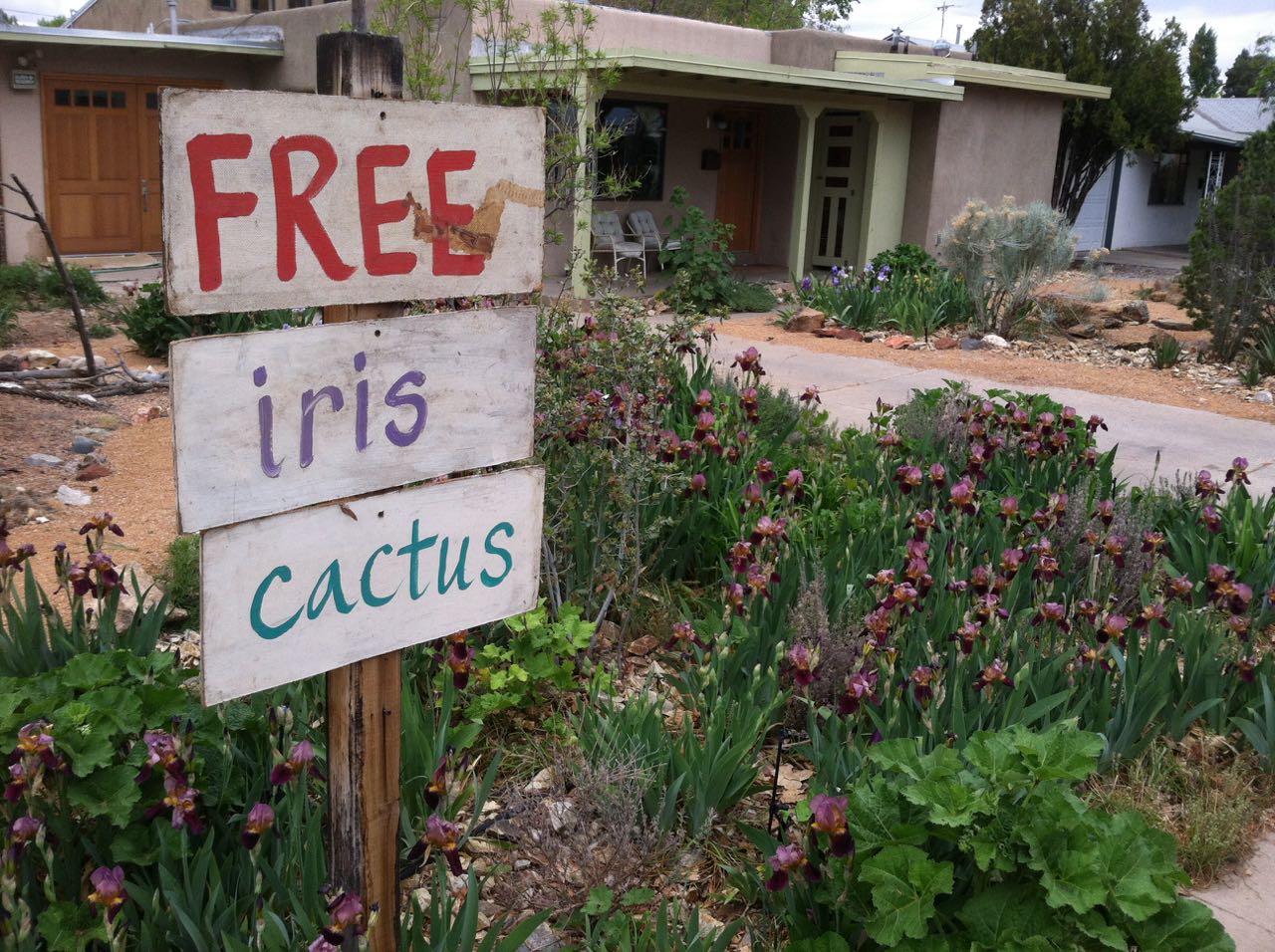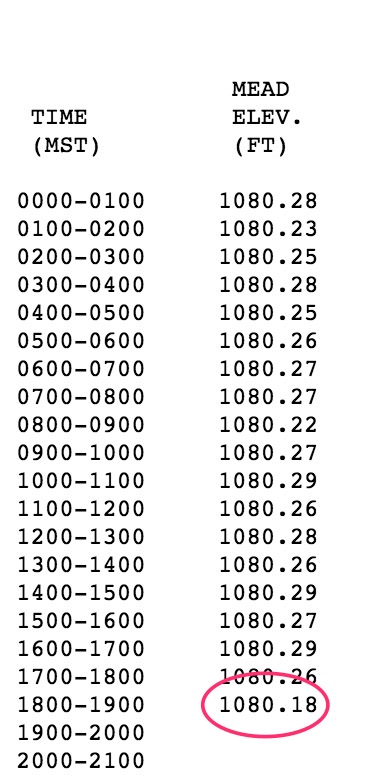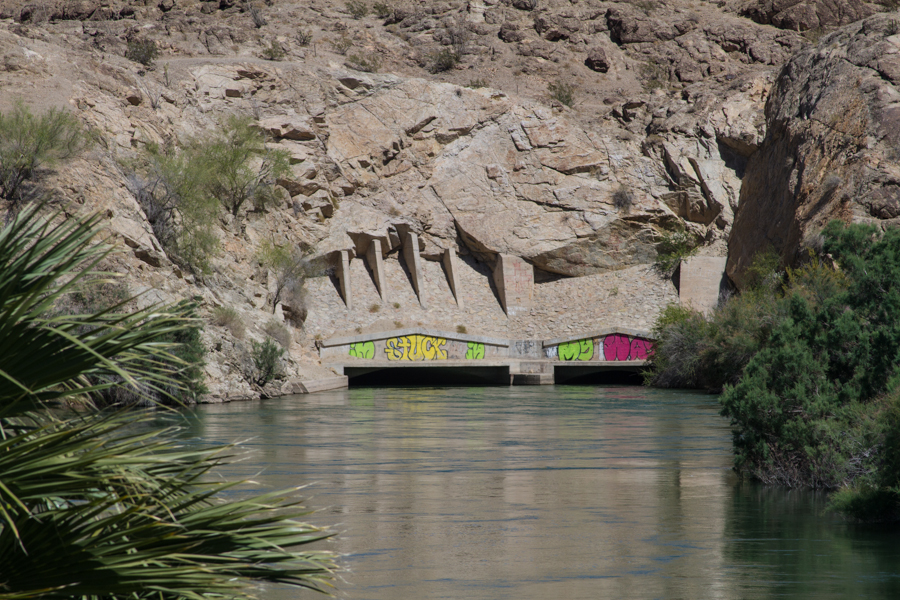As I write, the surface elevation of Lake Mead is 2 1/2 inches away from setting yet another record for its lowest levels since it was filled in the 1930s.
Henry Brean, with characteristic flair, writes that the threshold will likely be crossed Sunday:
The last time Lake Mead was this low was May 1937, the same month as the Hindenburg explosion.
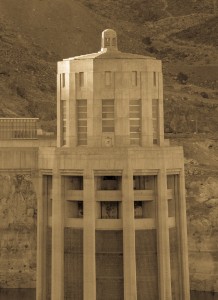
Hoover Dam from the Arizona side at sunset, Feb. 27, 2015
For what it’s worth, my money’s on late Saturday evening. I’ll probably stay up late and watch, maybe livetweet it or something. Water policy, especially in the Colorado River Basin, lacks for grand drama, so we storytellers must take it where we find it.
Two records ago I made a mad dash across two states to be there when the reservoir’s level dropped below a similar record and groped unsuccessfully for a storyline that might help me explain:
I tried this morning to explain to one of the tourists visiting Lake Mead the historic significance of the bathtub ring. He had jumped out of his car on an overlook on the Arizona side of Hoover Dam, and he was doing that thing where you hold your digital camera out at arms length to get yourself in the picture.
I told him it was a historic picture – that today Lake Mead had dropped to its lowest level since they built Hoover Dam in the 1930s. He looked puzzled.
Him: “Why’s it so low?”
Me: “Drought upstream. Water use downstream.”
Him: “It’ll fill up some day.”
And he jumped back in his car, headed for Vegas. This is how we do drought, American style.
Brean’s headline writers blamed “savage drought” for the problems, but drought’s a slippery word. My Oxford American defines it as “a very long period of little or no rainfall,” and I have a lot of respect for a good dictionary’s ability to capture the meaning a word actually carries in its common usage. But in this sense of the word, “drought” falls short.
We are, indeed, laboring under a very long period of less precipitation in the Colorado River Basin than we had come to expect, but Lake Mead is empty because, as that slow burn has unfolded, we have continued to take just as much water as ever out of the great reservoir.
That cannot continue indefinitely.


